20 Britpop guitar gods
A celebration of the big beasts of the '90s
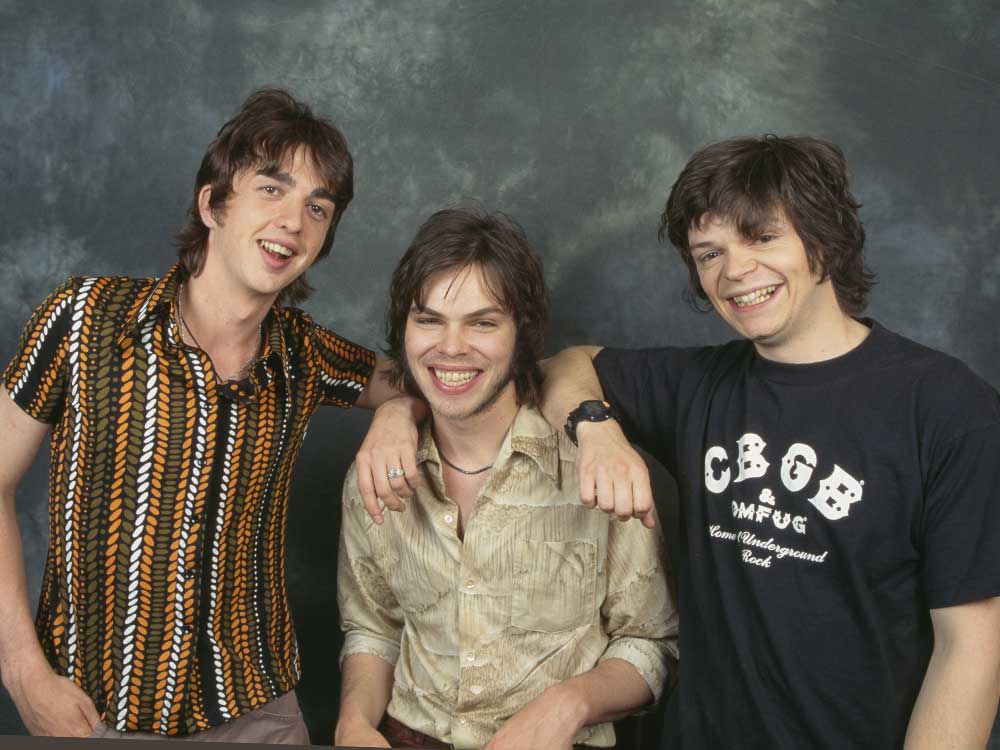
Intro/Gaz Coombes (centre)
2015 marks two decades since Blur and Oasis released their landmark albums, The Great Escape and (What’s The Story) Morning Glory?.
20 years on and Noel and Graham are still going strong with new releases, so to celebrate, we’re taking a look at the players who defined the biggest movement in UK guitar music since Beatlemania.
Here then, in no particular order, we present 20 Britpop guitar gods...
Gaz Coombes
“People spent a long time trying to lump us in with Britpop, but we weren’t bothered. So we didn’t spend our interviews going, ‘Look, we’re not Britpop!’, because it didn’t mean enough to us to even do that”
I Should Coco, the 1995 debut album from Supergrass, was released at the peak of Britpop, and its blend of aggressive punk, sunshine-laden pop and kerazy videos was very much in keeping with the cheeky culture of the time.
It helped that frontman and guitarist Gaz Coombes was a dab hand with writing infuriatingly catchy anthems, and the likes of Caught By The Fuzz and Alright were a testament to that.
Gaz never claimed to be a technical virtuoso, but his effective use of chunky barre chords and tasteful Neil Young-style solos made him a powerful presence nonetheless.
- Trademark gear: Burns Hank Marvin, Fender Twin/Bassman
- Essential listening: I Should Coco (1995)
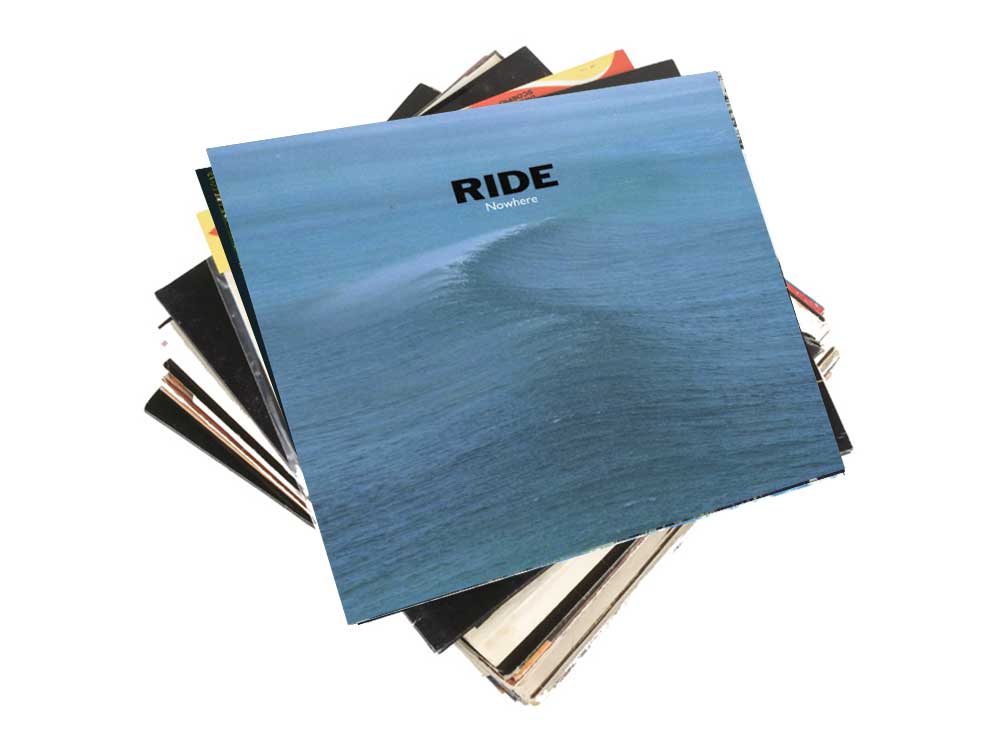
Andy Bell
“Underneath the shoegazing sound, there is a classic rock band structure holding it all together. If anything gives the music longevity, it’s probably that”
If you know him as the bassist in Oasis, and then guitarist in Beady Eye, you’re still not getting the best part of the Andy Bell story. Ride formed in Oxford in 1988 and their 1990 debut, Nowhere, is one of the key records of the British ‘shoegaze’ scene, alongside My Bloody Valentine’s Loveless.
Guitarists and vocalists Bell and Mark Gardener blended to give the band a poppier slant. Their follow-up, 1992’s Going Blank Again, predated Britpop and moved them away from their roots, but the early material’s more introverted charms still struck a chord for a loyal following, with Bell’s style falling somewhere between MBV’s hypnotic psychedelia and the intricate pop foundations of Marr and Squire.
The band’s success on Creation records paved the way for Oasis and Primal Scream; their last UK gig before their 1996 split was supporting the former, but the they recently reunited for their first dates in 20 years.
- Trademark gear: Rickenbacker 360/12, Gibson Les Paul
- Essential listening: Ride – Nowhere (1990)
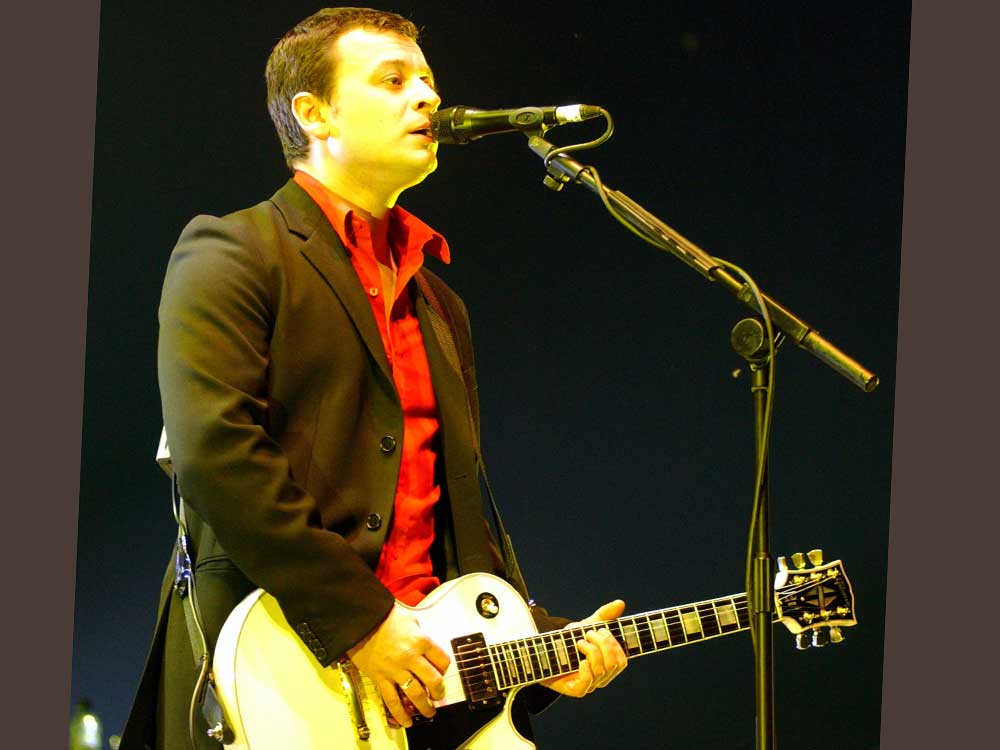
James Dean Bradfield
“I think that every band that stays the same basically just dies”
While rhythm guitarist Richey Edwards provided the Manics with an iconic image, James Dean Bradfield was the man with the musical plan, and his playing on landmarks Everything Must Go and The Holy Bible has inspired generations of guitarists. Spurred on by Edwards’ dark, cerebral lyrics, James’s early playing showcased a wide vocabulary of techniques, from the incisive riffery of Motorcycle Emptiness to the iconic arpeggiated chords of A Design For Life, a 90s guitar shop staple.
For such a diverse player, it’s interesting to note that some of JDB’s biggest influences are Joe Strummer, Steve Jones and Slash, the latter of whom inspired James’s use of the Les Paul. He even has a Slash Signature model among his mammoth guitar collection, which includes everything from John 5 Teles to Burns Brian May models and various Fret-Kings. But that’s not nearly as impressive as the variety of musical styles the Manics ran through in their early career, flitting between punk, classic rock and indie within the space of a few years. As a result, JDB continues to be heralded as one of the great unsung British guitar heroes.
- Trademark gear: Gibson Les Pauls, Marshall JCM900
- Essential listening: The Holy Bible (1994)

Richard Hawley
“I played a Cherry Red Fender Telecaster that was beautiful – and the band needed me to play in more of an angular, wiry style. It wasn’t easy, but it was something I was familiar with because I listened to Syd Barrett and stuff like that a lot. I suppose in my head that guitar sound was somewhere between Syd Barrett and Hubert Sumlin”
Before he came to be a craftsman of hollow-bodied cool and crooning vocals, Hawley played a part in two Britpop stories (he also played on All Saints’ cover of Under The Bridge, but we won’t hold that against him here).
Firstly, he was the guitarist in the Longpigs. They only released two records before their 2000 split, but their first is far too good to be ignored. Hawley’s guitar was a big part of 1996 debut The Sun Is Often Out’s blend of catchy choruses (especially on side A) and slightly untamed, Beatles-esque lines of guitar drama. When the ’Pigs folded, Hawley moved on to an even bigger gig as a touring guitarist for Pulp.
- Trademark gear: Fender Telecaster, Gretsch Country Gent
- Essential listening: Longpigs – The Sun Is Often Out (1996)
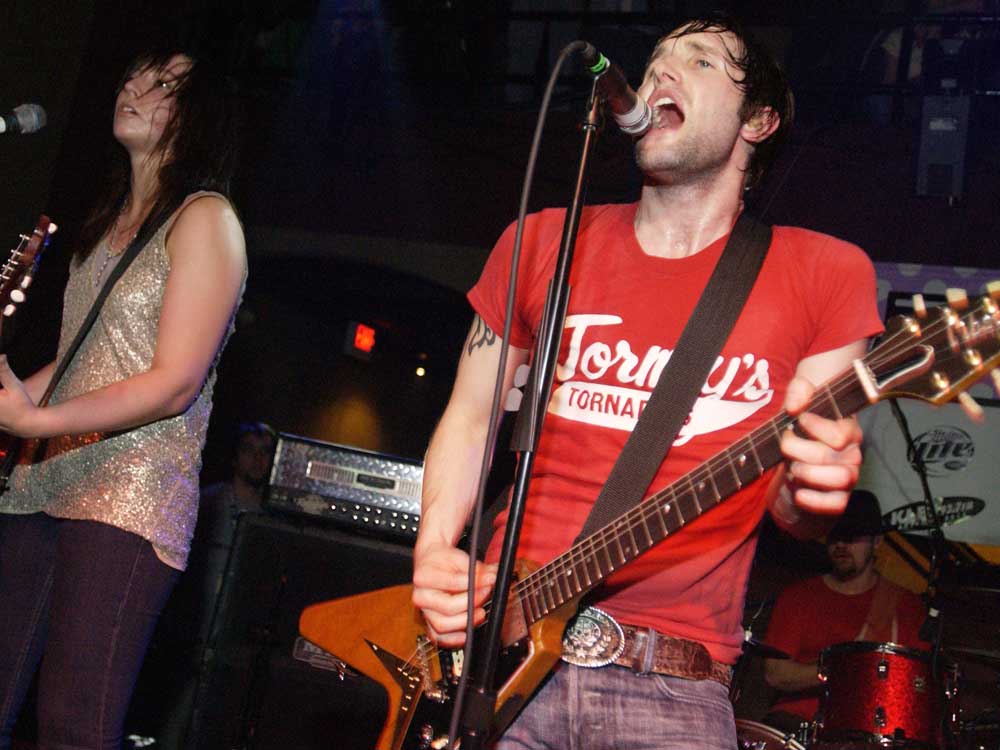
Tim Wheeler
“We don’t feel part of Britpop. I think it’s boring. We’re more into rock”
It’s hard to believe that the infectious, energetic pop of 1977 came from the brain of a teenager from Downpatrick. But it did, and in 1996 Tim Wheeler cemented himself as not only a prodigious songsmith, but also a not-so-shabby axe-slinger, too.
Brought up on a diet of punk, grunge and classic guitar pop, Tim thrashed his way through the loud/quiet dynamics of Ash’s poppy-punk tunes, unleashing some brilliantly crafted solos along the way (Lose Control, Girl From Mars, Oh Yeah). Ash were always Britpop outsiders sonically, and survive to this day, but to ignore them in this list would be criminal.
Trademark gear: Gretsch Silver Jet, Gibson Les Pauls, Gibson Flying V, Jim Dunlop Crybaby Wah
Essential listening: 1977 (1996)
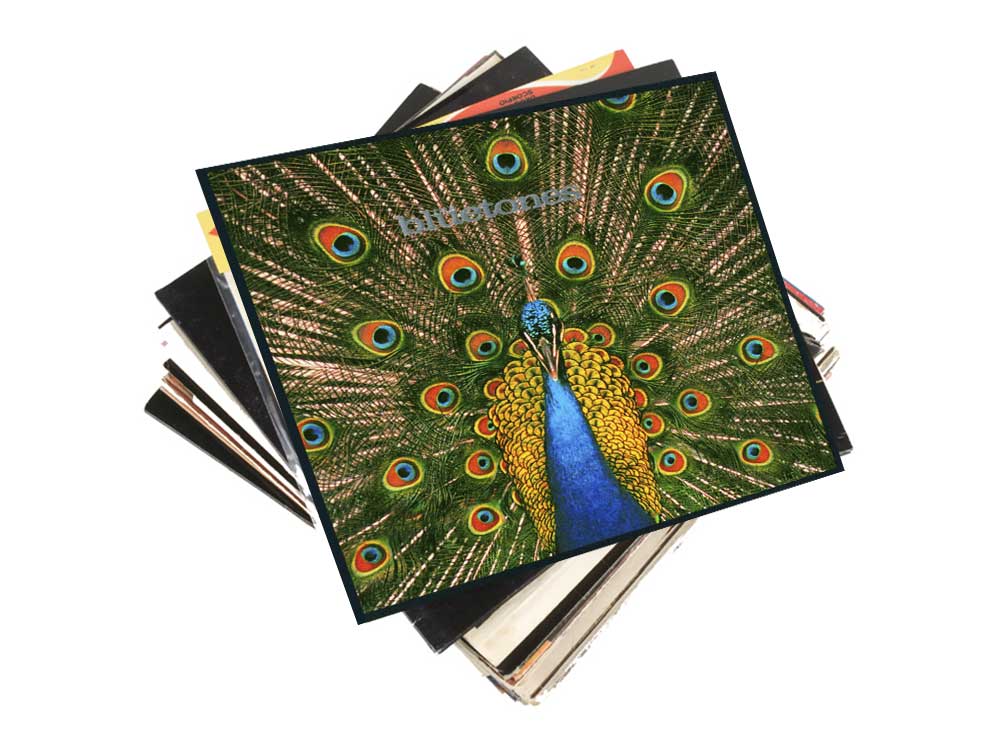
Adam Devlin
“We were a bit more transatlantic than the Fred Perry and Adidas brigade” (singer Mark Morriss)
Although indebted to The Stone Roses, The Bluetones had their own considerable charm. Guitarist Adam Devlin shone on the band’s debut, with his John Squire-alike simultaneous rhythm/lead style often played on overdriven Rickenbackers – and with those guitars’ narrow necks that’s no mean feat. From taut mod-ish pop (Bluetonic, Slight Return), through heavier riffs (Cut Some Rug), to more jam-based explorations (Talking To Clarry, about visits to favourite pub, The Clarence Arms), debut Expecting To Fly remains a Britpop-era classic. It knocked (What’s The Story) Morning Glory? off No 1.
- Trademark gear: Rickenbacker 360/360-12s, Gibson ES-335, Gretsch Duo Jet, Marshall half-stacks, Vox AC 30
- Essential listening:Expecting To Fly (1996)
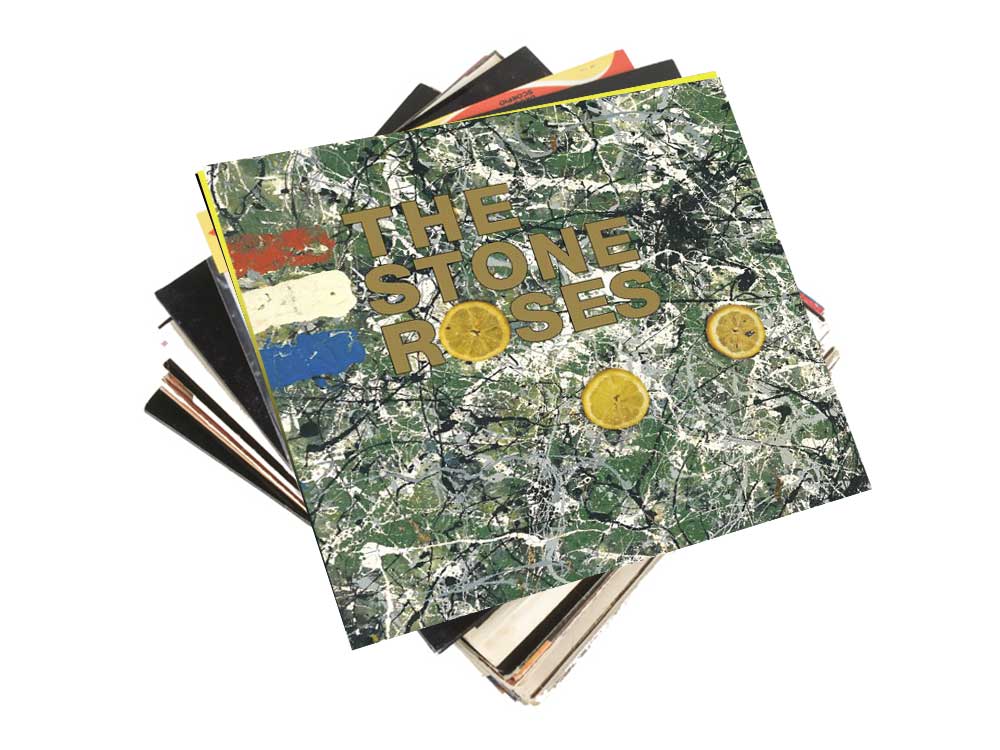
John Squire
“None of us has ever considered this band as a hobby. We got together with the deliberate intention of composing classic songs and that’s just about what we’ve done”
Squire and his playing share an enigmatic quality that was already immortalised on the Roses’ 1989 debut. With an album so full of inventive musicianship and songwriting, the Manchester four-piece took five years getting the follow-up together.
Over four of them were spent off the road, but Second Coming finally emerged at the birth of Britpop in 1994. Though it alienated many fans of their debut, the band had moved on musically and Squire’s sonic vision had widened from updating 60s pop and into the 70s on the swampy blues of Love Spreads and Driving South, sprawling funky opus Breaking Into Heaven and acoustic folk Your Star Will Shine.
After the Roses’ messy demise, Squire re-emerged three years later in poppier territory with short-lived band The Seahorses, before releasing two low-key solo albums and eventually relenting and reforming The Stone Roses in 2011. The band are still working on a new album.
- Trademark gear: Gibson ’59 Les Paul, Grestch Chet Atkins Country Gentleman, Custom Fender Jaguar, Fender 1960 Strat, Fender Twin Reverb, Mesa/Boogie Mark III
- Essential listening: The Stone Roses (1989)
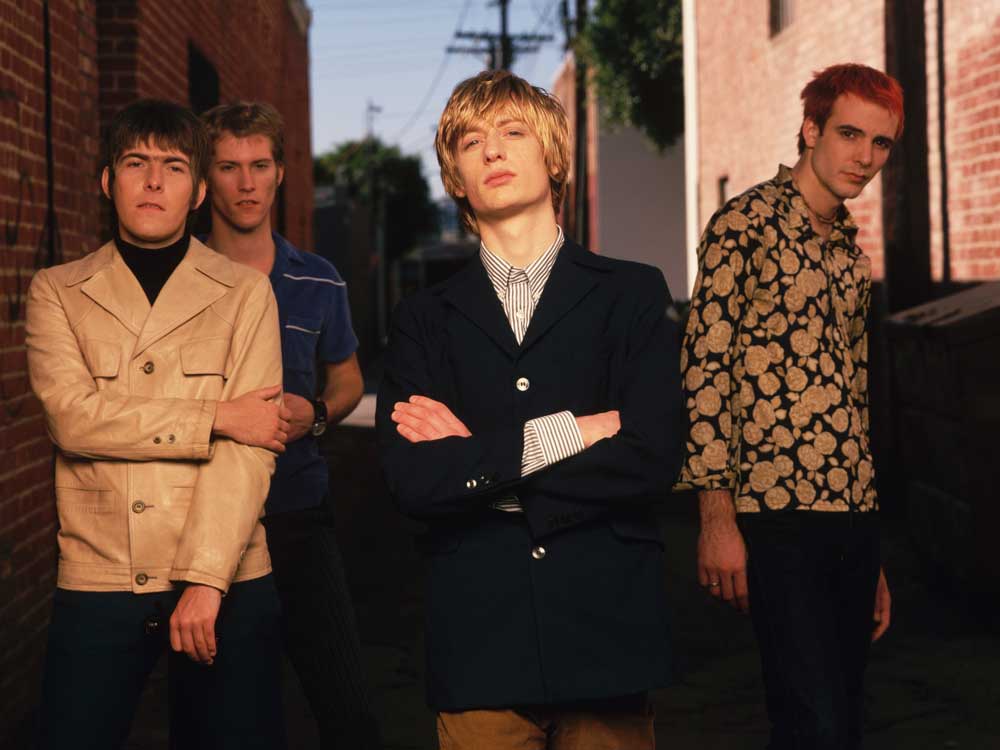
Crispian Mills (centre)
“I don’t think, ‘Let’s get my slide to sound like Gilmour…’ This is just what we enjoy playing”
To their detractors, Kula Shaker were ridiculous retro-obsessed chancers finished with pretentious imagery and misguided preaching. Cut through this, though, and Crispian Mills was an impressive guitar player who came armed with chops and tone.
Debut album, K, propelled them to the top of the UK charts, channelling Mills’ love of Deep Purple’s groove (their cover of Hush was one of their biggest hits), Gilmour’s soul, Jimi’s psychedelia and more than a few Indian influences. He appeared on the cover of Total Guitar issue 45, as well as Fender’s ad campaign for the Squier Vista series. Not bad for a player who in 1998 told the magazine: “I’m technically shoddy, and it’s all about habits that are good and bad.”
- Trademark gear: Fender 1970s Stratocaster, Squier Venus XII, Rickenbacker 360, Fender Twin Reverb, Crybaby wah, Boss ME-8
- Essential listening: K (1996)
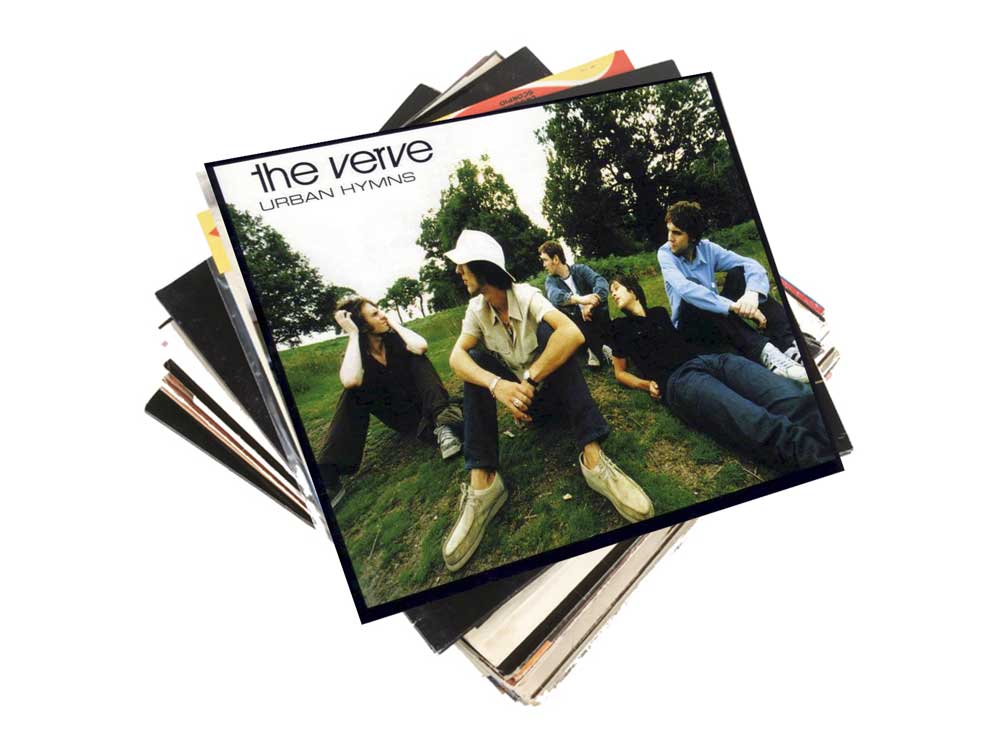
Nick McCabe
“It’s all about sound. I think guitar players who strive for technical excellence have lost the plot”
They split three times, but when The Verve’s creativity burned, it burned bright. And behind the sun-sized ego of Richard Ashcroft shone a humbler, equally crucial star: McCabe brought dazzling, textured playing to fuel the Wigan band’s big ambitions.
Their 1993 debut, A Storm In Heaven, is the sound of musicians rooted in their jam-session instincts, while much of bluesier, harder second album, 1995’s A Northern Soul, is live in the room (and McCabe is the kind of artist who never played the same guitar line twice).
The band’s creative chemistry would shift by 1997’s Urban Hymns, as Ashcroft had already penned much of it by the time he convinced McCabe to return after their first split, but his ethereal touch is integral to Catching The Butterfly and his country slide adds subtle depth to Ashcroft’s The Drugs Don’t Work.
- Trademark gear: Alesis Quadraverb, Watkins Copicat Gibson ES-335, Gibson Les Paul, 1979 Fender Strat, JCM 800, Mesa/Boogie Mark III
- Essential listening: Urban Hymns (1997)
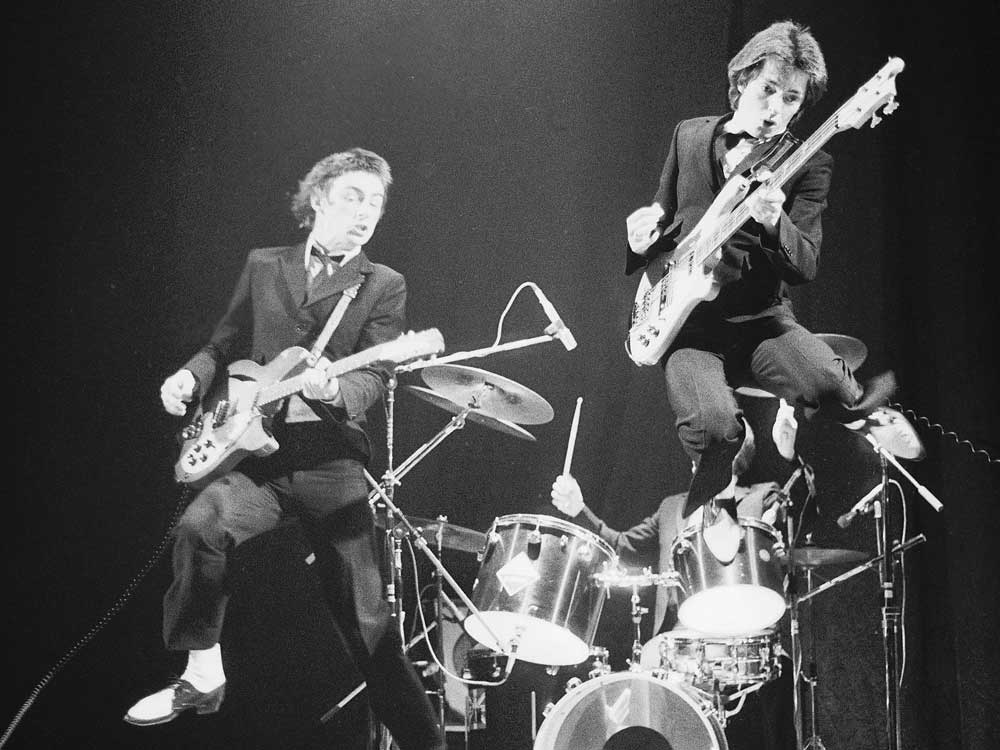
Paul Weller (left)
“In the 90s, I rediscovered my guitar. The Jam was obviously very guitar-based, but in The Style Council I got really disillusioned with playing the guitar. The further it went on, the less and less I played, to a point where I couldn’t pick it up any more”
It’s fitting that one of the biggest influences on Britpop should hit rude creative health in the 90s. The Modfather’s third solo album, Stanley Road, landed in 1995 and is one of the best Weller has made, with a little help from longtime collaborator Steve Cradock, and Noel Gallagher on acoustic duties for the funky shuffle I Walk On Gilded Splinters.
The gauntlet was thrown down for Britpop’s young pups – this was no elder statesman laurel-resting, but a musician re-channelling his rock and soul foundations. Woodcutter’s Son and Changing Man buzz with rock drive and rolling groove, and You Do Something To Me is his deepest love song. Two years later, Heavy Soul continued Weller’s run.
- Trademark gear: 1966 Epiphone Casino, 2100 Lead & Bass 50, Rickenbacker 330
- Essential listening: Stanley Road (1995)
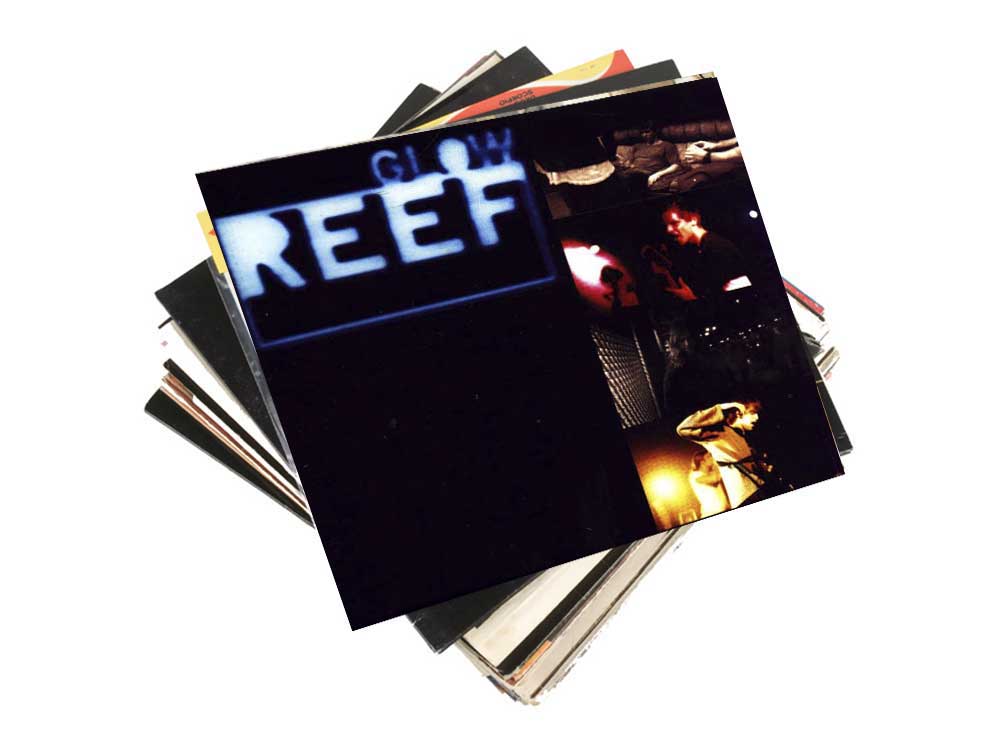
Kenwyn House
“We’ve been given labels in the past and we haven’t liked it. If we really have to have a label, then it would be ‘kicking’ rock ’n’ roll band’”
If Britpop was debatably just a collective term for bands that had little in common outside of nationality, Reef – more Brit-rock than pop – are the proof. Regardless, Kenwyn House was a monster of a guitar player.
Debut single, Naked, featured a massive Strat neck tone and more lush Hendrix-isms than you could shake an E7#9 at. Place Your Hands, from second album Glow, was adopted by TV show TFI Friday as the theme to the It’s Your Letters segment.
- Trademark gear: Fender Stratocaster and Telecaster, Gibson Les Paul Custom, Voodoo Vibe, ProCo RAT, Matchless Chieftain, Marshall JTM 45,Fender Tremolux
- Essential listening: Glow (1996)
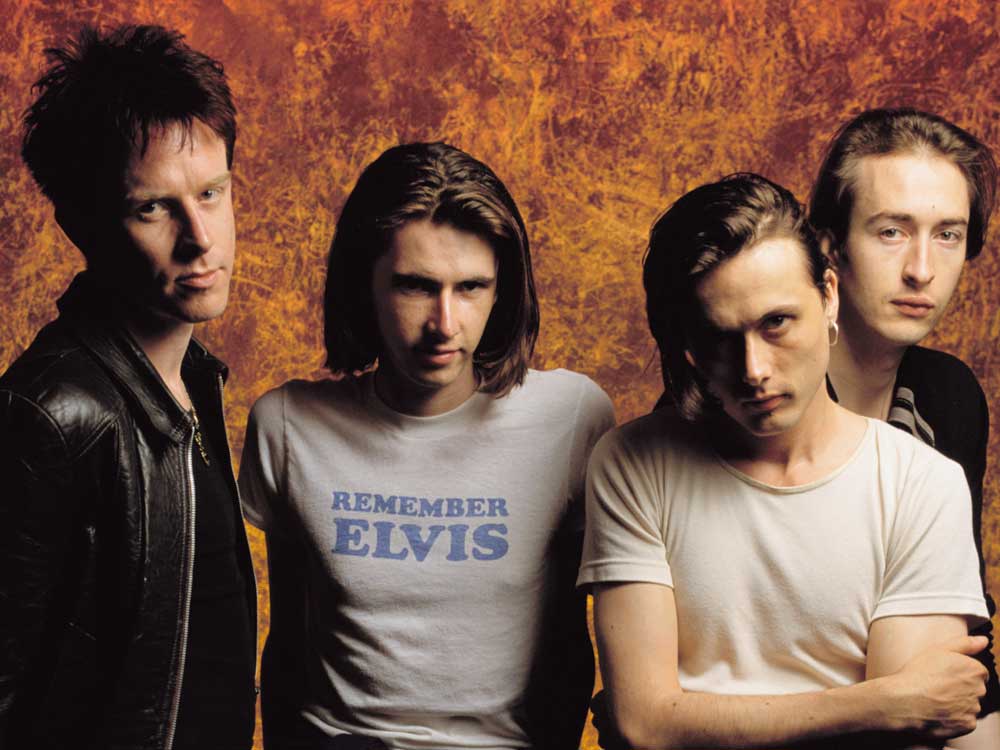
Bernard Butler (2nd left)
“I started listening to Neil Young whenI was still in Suede, and it became a gradual thing that eventually pulled me out of the band. He will never know about it, never know who I am, but he literally dragged me by my feet out of Suede”
Even before the 1993 release of Suede’s self-titled debut, the reputation of the alt-glam rockers was hitting heights thanks to Butler’s songwriting partnership with frontman Brett Anderson.
Butler’s jangly but biting arpeggiated riffing is at the heart of tracks such as So Young and We Are The Pigs. Modulation-enriched distortion tones drive Animal Nitrate and Moving.
The trashy, radio-friendly singles of Suede blazed a trail for Britpop; Dog Man Star was a rejection of the good-time vibe – dark, psychedelic and unhinged. An indicator of Anderson and Butler’s crumbling creative union, maybe?
- Trademark gear: Gibson ES-355, Gibson Les Paul, Vox AC30, Boss DS-2 Turbo distortion
- Essential listening: Suede (1993)

Richard Oakes
“[Suede] played at my home town, and it was an all right gig, but I wasn’t totally impressed…I knew I could add to them”
Back in 1994, a fresh-faced Richard Oakes replaced Bernard Butler in Suede. A tough ask considering Butler’s talent, Suede’s huge popularity and Oakes donning the Suede jacket at just 17. Many said Butler’s departure would destroy the band, but Oakes’ age was no barrier to his playing or songwriting ability, quickly learning his predecessor’s parts for a tour in late ’94 and laying down guitar that would help make their 1996 comeback album, Coming Up, their most commercially successful release.
- Trademark gear: Fender Jaguar, Gibson ES-355, Fender Twin, Vox AC30, ProCo Turbo RAT, Boss Turbo overdrive
- Essential listening: Coming Up (1996)
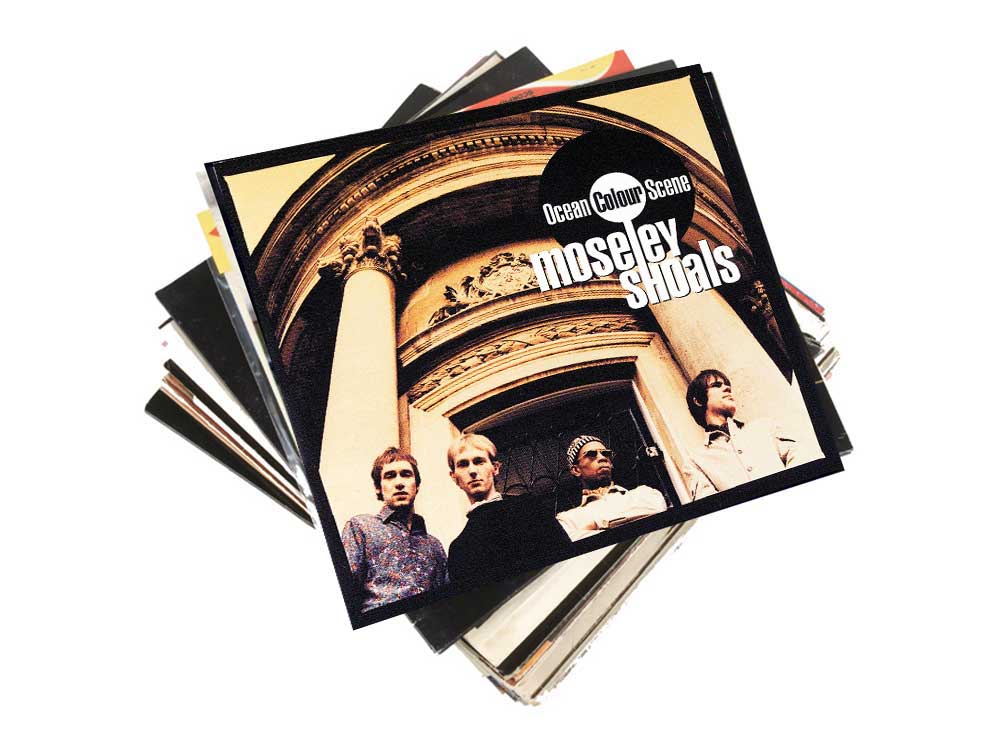
Steve Cradock
“People talk to me about technical stuff, and I just get bored. I don’t like rockers. I like soul in my music”
Steve Cradock, equal parts mod, blues and soul, made his mark with Ocean Colour Scene while also working as Paul Weller’s guitarist (Steve has performed on all of Weller’s solo albums). The release of OCS’s debut album saw them dropped and penniless. The next few years were spent in the wilderness, before they bounced back with an album that contained some of the best guitar playing of the era.
Moseley Shoals was self-recorded on a 16-track tape machine at the band’s studio of the same name and sold more than 1.5 million copies. OCS’s success continued after The Riverboat Song became an anthem for 20-somethings across the country as part of TFI Friday, and Hundred Mile High City from second album Marchin’ Already soundtracked Guy Ritchie’s Lock, Stock And Two Smoking Barrels. OCS have continued, releasing their 10th studio album, Painting in 2013, while Steve has released three solo albums.
Always outspoken, Steve had this to say to Total Guitar of Britpop in 1998: “When I first heard it, I thought, ‘Great, British pop’. But then there were these sad twats who jumped on the bandwagon. I mean, Elastica… ifI thought I had anything in common with them, I’d hang myself.” Err, sorry Steve, we just couldn’t leave you out!
- Trademark gear: Gibson Les Paul Custom, Gibson SG Standard, Gibson ES-335, Fender Twin Reverb, Blackstar Artisan 30
- Essential listening: Moseley Shoals (1996)
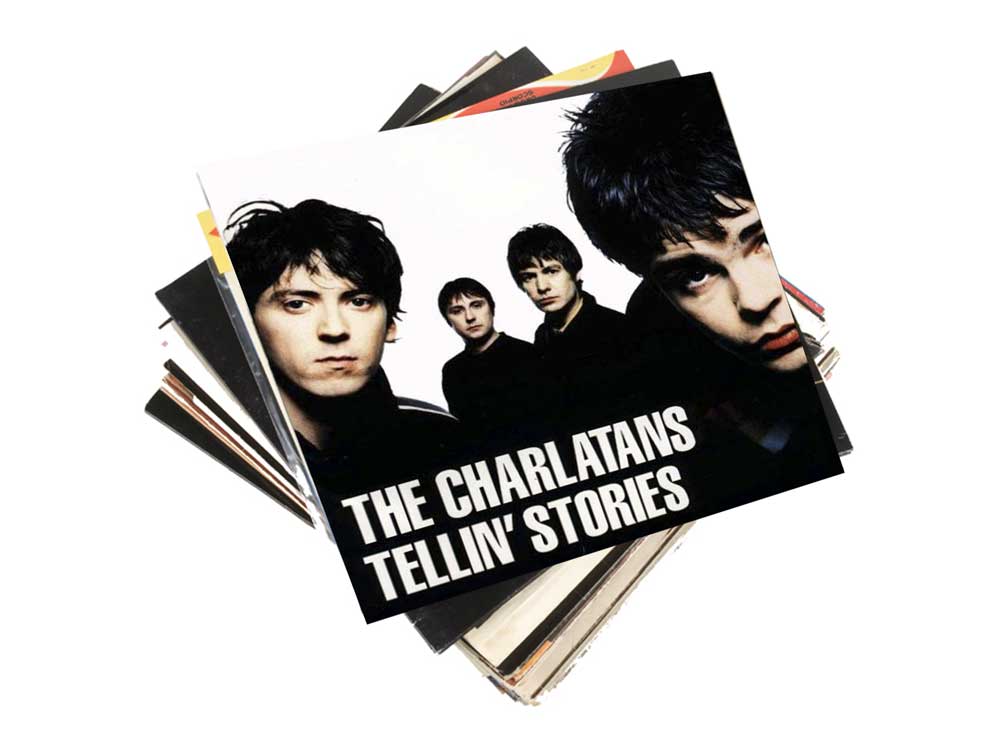
Mark Collins
“I’m a bit of a guitar hoarder, but to me what a guitar looks like is as important as it sounds”
Now 26 years into releasing music, The Charlatans predated Britpop by some years, being associated with the ‘baggy’ scene, and being simply a tight Hammond-driven rock ’n’ roll band. Mark Collins joined for second album, Between 10th And 11th, and never looked back.
He’s not a flash guitarist and his (rare) solos eschewed wailing. Yet his bluesy, Stonesy riffs and fills (Just Lookin’, North Country Boy, Can’t Get Out Of Bed) are testament to a great band player. Appropriately, Collins is good mates with Ronnie Wood.
- Trademark gear: Les Paul Custom, Gretsch Duo Jet, Gibson SG (for slide), Gibson J-200, Vox AC 30
- Essential listening: Tellin’ Stories (1997)

Graham Coxon
“My Blur riffs were all wilfully awkward. All the accolades? That just means I’ve done a good job of hiding my inabilities…”
More than any other band, Blur put the pop in Britpop – but that doesn’t mean Coxon’s guitar parts were conventional. Just listen to the quirky chorus riff on Parklife or the flanged pick scrapes on Girls & Boys: here was a guitar anti-hero in a mainstream proposition.
And combined with Damon Albarn’s Brit-centric lyrics – written to stave off homesickness during lengthy USA tours – it became a formula that provided the yin to Oasis’s yang, and spawned an entire movement with the albums Modern Life Is Rubbish and Parklife.
Influenced by everyone from British legends Pete Townshend and Jeff Beck to American alternative heroes such as Pavement’s Stephen Malkmus, Coxon’s playing style has always been deliberately difficult. “My Blur riffs were all wilfully awkward,” he told Total Guitar. “All the accolades? That just means I’ve done a good job of hiding my inabilities…”
But what he lacks in technical ability, he makes up for in experimentation – employing mountains of Boss pedals in the studio and on stage to create sounds no-one else would think of. A true original.
- Trademark gear: Fender Telecaster, Marshall 1959SLP,tons of Boss pedals!
- Essential listening: Parklife (1994)
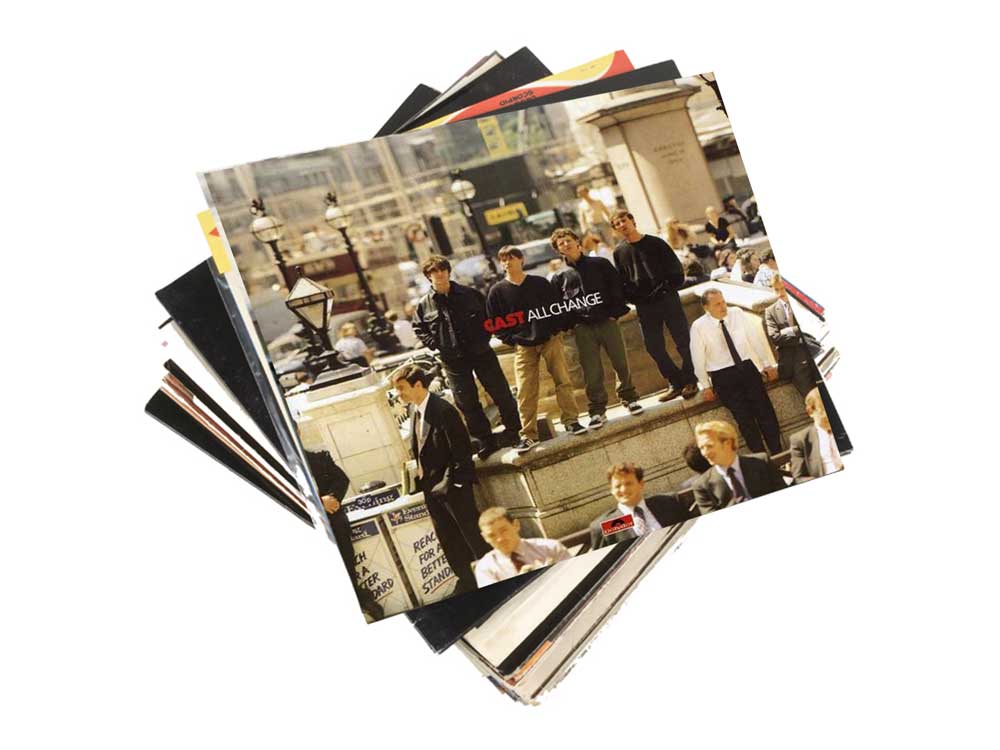
Liam 'Skin' Tyson
“Cast don’t compete with anyone. We’re there with the stars and the pyramids, spirit and religion. With all things holy. And great” (frontman John Power)
After lost geniuses The La’s split, bassist turned guitarist/singer John Power formed his own “cosmic Scouse” quartet with a flush of success – their first album was the Polydor label’s best-selling debut ever. Power kept his 60s-influenced songs tight, but Cast’s trump was lead guitarist Tyson, who melded crunchy riffs (Alright) with wah solos
(Sandstorm) and trippy delay (History). Although seemingly lost in a fug of weed, Cast were an amazingly tight band – Noel Gallagher recalled one live show as “a religious experience”. The talented Tyson now plays with Robert Plant.
- Trademark gear: Gibson Les Paul, Gibson ES-335, Fender Telecaster, numerous effects (delays, loopers, wah, distortions), Hiwatt and Vox amps
- Essential listening: All Change (1995)
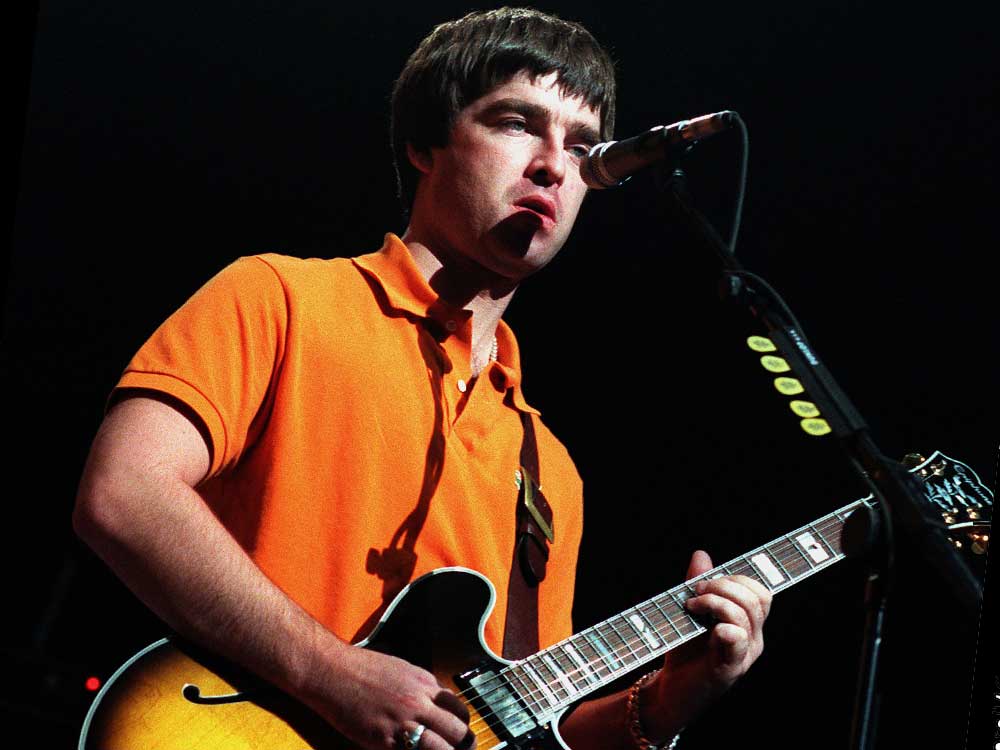
Noel Gallagher
“I played lead guitar in the band because everybody else, in the early days, was useless, so that kind of fell to me. It’s not something I ever thoughtI would put myself up there with John Squire, or Johnny Marr, or all those great British guitarists, that’s not my thing. My thing was songwriting”
The Chief of Britpop’s heavyweight champions didn’t do stagecraft, but he did write songs – great ones. Noel’s pre-Oasis stockpile and creative run between 1994 and 1997 was staggering in its consistent excellence, to the degree that the compilation of Oasis B-sides from that era (1998’s The Masterplan) rivals both of their classic studio albums for sheer quality.
Noel and his brother Liam were also the best source of controversial and frequently hilarious soundbites, whether firing pot shots at Blur during the peak of the Britpop wars in 1995 when the latter’s Country House took on Oasis’ Roll With It in a chart battle (Blur took the No 1 slot), or anyone else who the raconteurian brothers felt like taking aim at.
Noel’s role as lead guitarist in the classic Oasis line-up fully embraced the joys of the pentatonic and fifths in his rhythm work, but his vocalist’s instinct for crafting memorable bluesy lead lines is often overlooked by the detractors.
It all got a bit much by 1997’s Be Here Now, though. Even the usually confident Noel has openly dismissed its many-layered identical guitar parts and overly long songs as “shit”. Oasis would never return to their creative peak, but their songwriter is going from strength to strength as a solo artist.
- Trademark gear: Gibson Les Paul, Gibson ES-335, Epiphone Sheraton, Fender Telecaster, Ibanez Tubescreamer
- Essential listening: DefinitelyMaybe (1994)
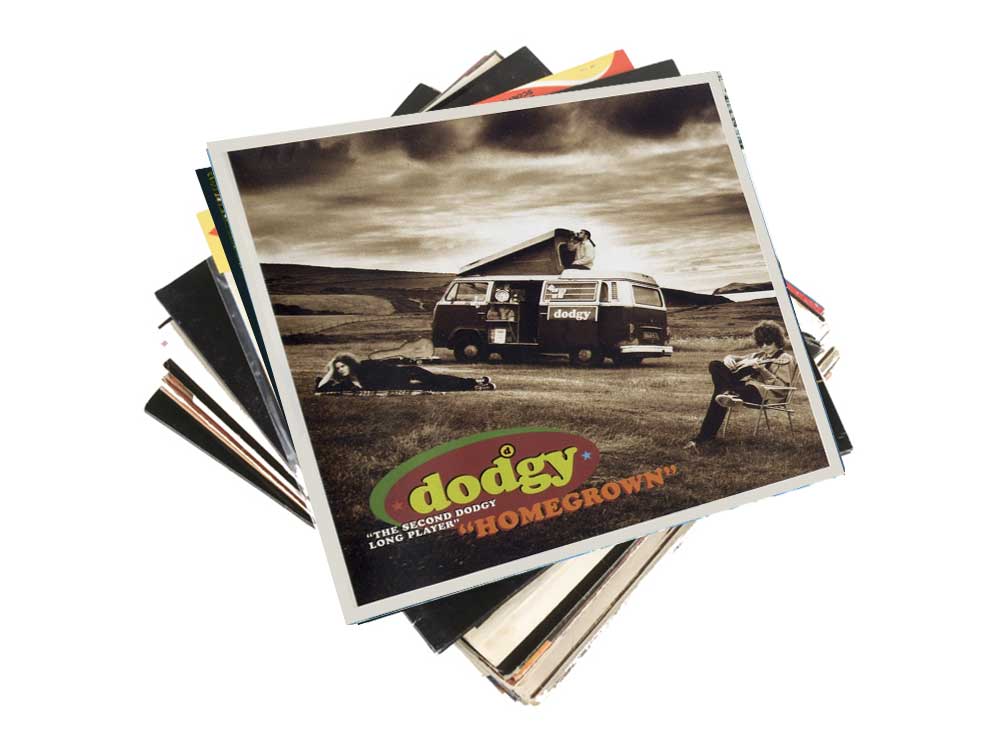
Andy Miller
“We were the merry pranksters of Britpop. A punk, a rocker and a soul boy” (singer Nigel Clark)
Like The Bluetones – the two bands were once housemates – Dodgy veered towards a 60s West Coast sound, but their spliffy anthems (Staying Out For The Summer, Grassman) made them festival favourites, and Good Enough was UK radio’s most-played song of 1996.
Miller had a solid way with tight supporting rhythms and melodic soloing, and frontman/bassist Clark even went on to teach a Britpop course at music college: “Admittedly, I was a bit biased towards Dodgy.” The trio still occasionally reunite “to act stupid”. Odd fact? Miller says his favourite players were always Deep Purple’s Ritchie Blackmore and Jimmy Page.
- Trademark gear: Fender Telecaster and Stratocaster, Hiwatt and Ampeg amps
- Essential listening: Homegrown (1994)
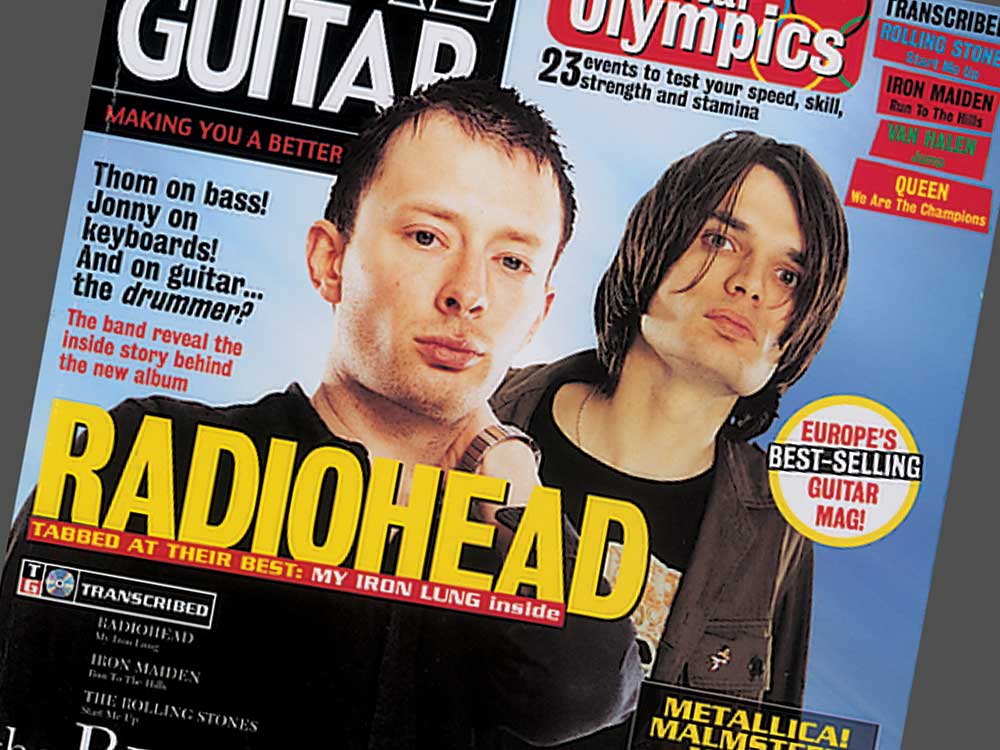
Jonny Greenwood
“I sometimes feel a bit embarrassed to play guitar. There’s something – I don’t want to sound ungrateful – but there’s something very old-fashioned and traditional about it. You meet kids today whose grandparents were in punk bands. It’s very old and traditional, but then so is an orchestra and so is astring section”
Although these days he’s just as at home with soundtracks, orchestral scores and modular synths, back in ’94, Jonny was known only as a British guitar hero, first making his presence known with the antagonistic muted stabs on breakthrough hit Creep – allegedly his attempt to sabotage the song.
However, considering the way in which he tore up the guitar-playing and tone rulebook, you could hardly accuse Jonny of undermining Radiohead’s sound. Instead, armed with a host of filters, phasers and a DigiTech Whammy, he painted with a palette that took the band to a trippier, more subversive place – a journey that began on 1994’s The Bends, and took a proggier turn for 1997’s OK Computer.
The melodies and solos on My Iron Lung and Paranoid Android have become required study material for guitarists of all genres, while The Bends singles High And Dry and Fake Plastic Trees were the blueprint for the Coldplay-led post-Britpop movement. While Radiohead no longer rely on guitars to provide the bulk of their sonic explorations, Jonny continues to be a creative force.
- Trademark gear: Fender Telecaster, Vox AC30, DigiTech Whammy
- Essential listening: The Bends (1994)
Total Guitar is Europe's best-selling guitar magazine.
Every month we feature interviews with the biggest names and hottest new acts in guitar land, plus Guest Lessons from the stars.
Finally, our Rocked & Rated section is the place to go for reviews, round-ups and help setting up your guitars and gear.
Subscribe: http://bit.ly/totalguitar


